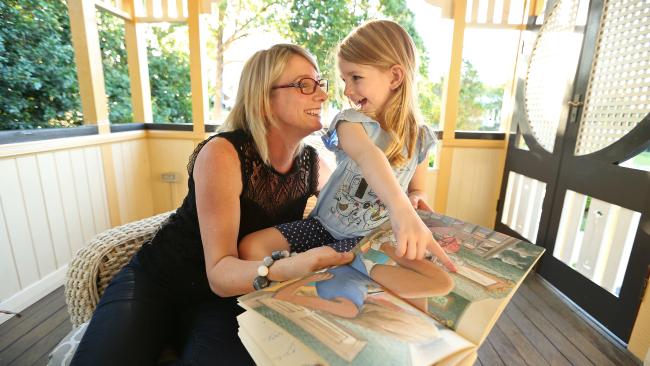Autora: Pía Toro M/La Tercera
Así lo reveló la VIII Encuesta de Presupuestos Familiares del INE, la que además arrojó que el gasto promedio mensual de los hogares chilenos aumentó 19% en los últimos cinco años, alcanzando $1.121.925. Alimentos y Transporte acaparan casi el 34% del desembolso mensual de las familias del país.
El gasto promedio mensual de las familias se elevó en 19,2% entre los años 2012 y 2017. Así lo reveló la VIII Encuesta de Presupuestos Familiares (EPF) del Instituto Nacional de Estadísticas (INE), que mostró que en cinco años el desembolso pasó de $940.964 a $1.121.925.
Este gasto promedio es mayor en el Gran Santiago que en el resto de las capitales regionales: $1.243.155 y $969.048, respectivamente. Hay que recordar que desde 2007 que la medición también incluye a regiones, adecuándose a los estándares exigidos por la Ocde. En esta oportunidad, la encuesta también consideró a la nueva Región de Ñuble (Chillán y Chillán Viejo).
En cuanto a ingresos de los hogares, la medición muestra un crecimiento real del 16,4%, pasando de $1.025.313 a $1.193.456 en promedio. Esto significa que el gasto creció 2,8 puntos porcentuales más que el ingreso.
Los ingresos de los hogares del país provienen mayoritariamente del trabajo (85%). Este se descompone en un 64,2% por sueldos y salarios; 13% por trabajo independiente o cuenta propia y 6,8% jubilaciones y pen-siones.
El principal sustentador del ingreso del hogar son los hombres (62,4%), mientras que la participación de las mujeres llega al 37,6%.
Los resultados de esta encuesta son primordiales para el diseño de la nueva canasta de alimentos (que debe estar a fines del primer semestre), que inciden en las variaciones del Índice de Precio al Consumidos (IPC) y para la medición de la pobreza y la corrección de las cuentas nacionales.
Gastan más
La encuesta también muestra que los hogares más vulnerables del país presentan gastos mayores a los ingresos de los que perciben. Así sucede en los tres primeros quintiles socioeconómicos, es decir, el 60% de los hogares en Chile (ver gráfico). Por ejemplo, en el primer quintil (más pobres) el ingreso mensual es de $358.181, mientras que el gasto es de $595.144. En el segundo quintil es de $610.100 versus $743.260. Y el tercer quintil, aunque la diferencia es menor, los hograes tienen ingresos por $854.635 y gastos por $876.521.
Esto, además, da cuenta que en el I quintil la diferencia entre el ingreso y el gasto se elevó. Si en 2012 era de 49%, en la última encuesta EPF esta diferencia es de 66%. En el II quintil, este margen también aumentó, pero en menor magnitud, pasando de 18% a 22%.
A su vez, los ingresos disponibles promedio per cápita se elevaron entre 2012 y 2017, pasando de $344.899 a $425.608, elevándose en un 23% aproximadamente. Sin embargo, en comparación con el gasto, la encuesta revela que el 80% de las personas gastan más de lo que perciben, es decir, este fenómeno afecta a los cuatro primeros quintiles socioeconómicos a nivel per cápita.
Para el director del INE, Guillermo Pattillo, estos resultados no sor sorpresivos. “Sin duda que el proceso de crecimiento económico y desarrollo a largo plazo van modificando los resultados. Este es un antecedente que nos ubica en el estado de desarrollo que es consistente con lo que es nuestro PIB per cápita y los programas que la autoridad tiene de redistribución de ingresos”.
¿Qué consumen?
Al observar el consumo de los hogares, el podio se lo llevan los alimentos y bebidas no alcohólicas con $209.983 mensuales en promedio, transporte con $170.238 y vivienda y gastos en servicios básicos con $160.692 al mes.
Ahora bien, los bienes que elevaron el consumo de los chilenos en estos últimos 5 años están asociados más bien al tiempo libre y al bienestar. Es así como el gasto en hoteles y restaurantes aumentó su participación en el consumo de los hogares en 2,3 puntos porcentuales (pp) (6,5% del total), lo siguen salud que se elevó en 1,3 pp (7,6%) y alojamiento, electricidad y combustibles con un 0,8 pp más de incidencia (14,3%).
En la vereda contraria, educación presentó resultados a la baja, pues fue el servicio con mayor descenso en el consumo de los hogares, retrocediendo 1,4 puntos (hasta 6,5% del total).
Si bien los hogares de menores ingresos tienen una incidencia mayor en el gasto en educación superior que los hogares de mayores recursos, 15,4% y 9,6%, respectivamente, en términos monetarios es a la inversa, es decir, por este concepto el I quintil gasta $144.713 y el de mayores recursos $276.506.
La encuesta también refleja que las familias compuestas por adultos mayores tienen mayores gastos. Por ejemplo, el gasto en salud de un hogar sin adulto mayor corresponde al 10,7% de los ingresos, mientras que en un hogar sin una persona mayor este gasto sólo llega a 6,8%. Cuando observamos el consumo de alimentos, el pan sigue siendo el líder en los hogares, ya que el 96,3% de los hogares de las capitales regionales de Chile realiza gastos en algún tipo de pan. Le siguen las bebidas gaseosas con un 73,9%.
Fuente: http://www.latercera.com/pulso/noticia/60-los-hogares-chile-gasta-mas-lo-percibe-sube-gasto-salud-baja-educacion/220366/









 Users Today : 139
Users Today : 139 Total Users : 35404406
Total Users : 35404406 Views Today : 177
Views Today : 177 Total views : 3333951
Total views : 3333951